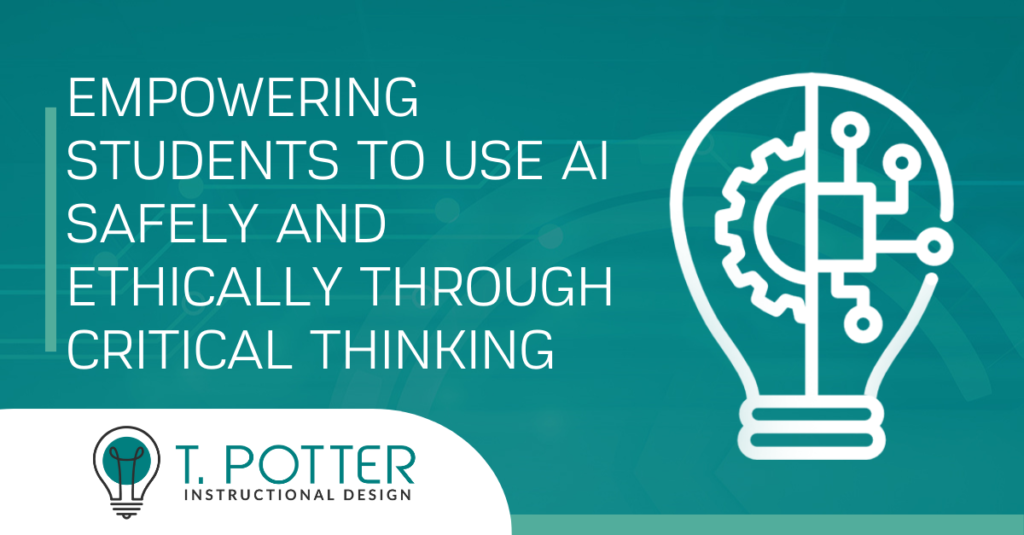“If you don’t talk to your kids about drugs, who will?”
As an Elder Millennial raised on Saturday morning cartoons, I grew up seeing those anti-drug public service announcements that said things like, “Suzy’s parents taught her almost everything. But they never taught her about drugs. So Suzy learned one final lesson on her own. When you don’t say no to your kids about drugs, it’s the same as saying yes”; and, “If you don’t talk to your kids about drugs, someone else will.” Say what you want about the War on Drugs, but those ads were memorable. I was sure there were going to be pushers on every street corner, just waiting to offer me hard drugs.
Now that educators are preparing to return to school next month, they’re confronting the fact that unlike all those drug dealers targeting third graders, ChatGPT is ubiquitous. As Stephen Bauchard writes, there is no way to keep AI out of schools – or society. We can’t ignore it; students will be using ChatGPT and other AI tools, and they will need to learn how to think critically about it.

If you don’t talk to your students about ChatGPT, who will?
It is urgent that we equip our students with the skills to engage with AI tools like ChatGPT in a meaningful and discerning way. In this blog post, we’ll explore how to foster critical thinking through the lens of Bloom’s Taxonomy, guiding students to remember, understand, apply, analyze, evaluate, and ultimately create with generative AI. Our goal is to enable learners to become active participants in unraveling the strengths, weaknesses, ethical implications, and creative possibilities of ChatGPT, all while sharpening their critical thinking abilities.
This approach provides a framework for structuring lessons and activities rather than subject-specific activities themselves. This framework can be adapted to multiple grade levels and disciplines; I’ll give some examples below.
A Scaffolded Approach to Teaching Critical Thinking About AI

Remember
At this first level, students need to learn fundamental information about what generative AI is and what it does. It may be useful to include a brief history of ChatGPT and GAI to provide context and explain the basics of training large language models, such as pre-training and fine-tuning processes. The objective here is:
- Define generative AI, ChatGPT, and large language models (LLMs).
Understand
Next, students need to recognize how ChatGPT/GAI works. The learning objectives for this are:
- Explain how ChatGPT and other GAI generate content.
- Recognize the strengths of GAI tools, such as their ability to generate creative content, assist with research, or provide language translation.
- Recognize the weaknesses of GAI, including limitations in understanding context, potential errors and biases, and the inability to provide real-time feedback or human-like interaction.
Apply
Provide specific examples and scenarios where ChatGPT can be useful, such as drafting emails, brainstorming ideas, offering editing suggestions, or summarizing material. Offer guidance on how to construct effective text prompts to elicit desired responses from ChatGPT. The objectives are:
- Identify scenarios in which ChatGPT could be used and for what purpose.
- Draft text prompts to generate content in these scenarios.
- Use these text prompts in ChatGPT to generate materials to achieve the desired result in a variety of scenarios.
Analyze
After trying their prompts in ChatGPT, ask students to reflect on how they would have approached this task without ChatGPT and what the outcome would have been. Encourage students to compare the output from ChatGPT with their own approaches to the task. Students should be able to answer these questions:
- How did ChatGPT’s output differ from what you would have created?
- How did this process differ from how you might have done that task before?
- What adjustments did you have to make to get ChatGPT to deliver what you wanted? Why did those adjustments work or not work?
- What strengths or benefits of ChatGPT did you discover?
- What weaknesses or drawbacks of ChatGPT did you encounter? Are there ways to mitigate these weaknesses?
- What new skills did you have to practice to accomplish this task? What skills did you delegate to ChatGPT that you would have had to practice if you had done the task on your own?
Evaluate
Prompt students to develop criteria for judging the productivity and effectiveness of using AI in specific contexts; they may want to include factors like accuracy, speed, and resource allocation. Discuss ethical considerations related to AI usage, including issues like data privacy, potential biases, and responsible disclosure of AI-generated content. The objectives here are:
- Critically evaluate the productivity, efficiency, and effectiveness of using ChatGPT in this situation and identify ways in which the process could be improved.
- Develop a working definition of ethical AI use, and evaluate whether this case represents using AI ethically, honestly, and with integrity.
Create
In this final step, students will apply their knowledge and critical thinking skills to develop original projects that leverage generative AI. For instance, you might ask students to design a project or activity that incorporates the use of ChatGPT while addressing a real-world problem or task.
Let’s look at some examples of how this process could be applied to different subjects.
For example, a Humanities teacher may teach students critical thinking about AI by assigning students to use ChatGPT in researching and writing about an art movement. Here’s how instructors could scaffold this:
- Remember: Recall foundational information about what ChatGPT and GAI are and how they work.
- Understand: Describe how ChatGPT could be used in this assignment.
- Apply: Plan and carry out conversations with ChatGPT to generate information.
- Analyze: Fact-check ChatGPT’s output and identify places where important information is missing.
- Evaluate: Meta-write about what they learned about the art movement and about ChatGPT in this process, what benefits and drawbacks they encountered, and what skills they needed to develop to carry out this process.
- Create: Work in ChatGPT to create a textual description of an original piece of art representing something about the art movement they studied. Then enter this description into an AI image generator such as DALL-E, Midjourney, or Stable Diffusion to create an image. Iterate on this process until they have created a satisfactory image.
Here are more examples (generated by ChatGPT) of assignments demonstrating how the steps of Bloom’s Taxonomy can be adapted across different subjects, allowing students to engage with ChatGPT in a variety of educational contexts.
- English Language Arts:
- Analyzing a literary text: Students can use ChatGPT to generate alternative interpretations or summaries of a literary work and compare them with their own analysis.
- Creative writing prompts: Students can use ChatGPT to generate writing prompts or story ideas, evaluate their effectiveness, and then create their own original pieces.
- Science:
- Exploring scientific concepts: Students can interact with ChatGPT to gain a better understanding of complex scientific topics, ask clarifying questions, and analyze the accuracy of the AI-generated explanations.
- Designing experiments: Students can use ChatGPT to brainstorm and refine experimental design ideas, evaluate potential variables, and assess the feasibility of their proposed experiments.
- Mathematics:
- Problem-solving assistance: Students can utilize ChatGPT to seek step-by-step explanations for challenging math problems, compare the AI-generated solutions with their own methods, and evaluate the efficiency and accuracy of the AI’s approach.
- Generating math puzzles: Students can collaborate with ChatGPT to create math puzzles or challenges for their peers, critically evaluate the AI-generated puzzles, and refine them for clarity and difficulty.
- Social Studies/History:
- Investigating historical events: Students can use ChatGPT to explore specific events, analyze different perspectives, and critically assess the AI-generated information for accuracy and biases.
- Debating historical controversies: Students can engage in virtual debates with ChatGPT, taking on different historical perspectives or roles, and evaluate the AI’s responses for logical coherence and historical accuracy.
- Foreign Languages:
- Practicing language skills: Students can have conversations with ChatGPT in the target language to practice vocabulary, grammar, and cultural understanding, evaluate the AI’s language proficiency, and reflect on the limitations of AI in language learning.
- Visual Arts:
- Generating artistic inspiration: Students can use ChatGPT to generate prompts or ideas for their artistic projects, explore various artistic styles and themes, and critically analyze the quality and relevance of the AI-generated suggestions.
Whether it’s through exploring historical figures, crafting stories, solving math problems, or engaging in language practice, the principles of critical thinking and AI literacy can be integrated into a range of educational contexts. By encouraging students to reflect on the strengths and weaknesses of AI, question its output, and consider its ethical implications, we are nurturing their capacity to navigate the world of technology with a discerning eye.
As we prepare our students for a future where AI continues to evolve and permeate all aspects of society, let’s remain open to the opportunities it presents. By embracing the potential of AI and fostering critical thinking skills, we can empower our students to be active contributors to a world that demands not only digital literacy but also thoughtful engagement with the technologies that shape our lives.
Abi Bechtel is a writer, educator, and ChatGPT enthusiast. They have an MFA in Creative Writing from the Northeast Ohio MFA program through the University of Akron, and they just think generative AI is neat.


